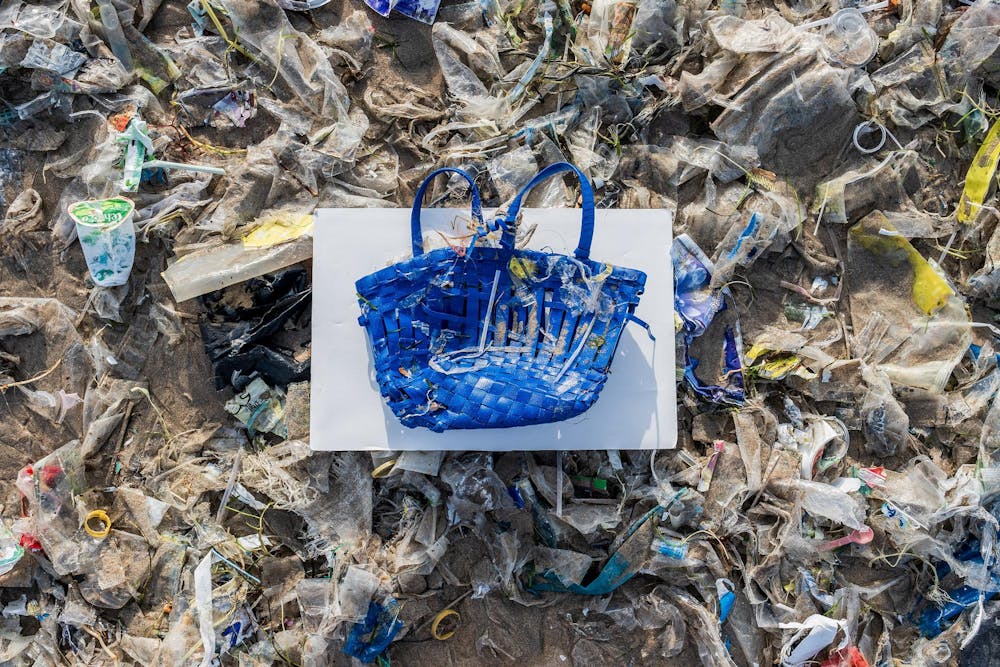The week of my 17th birthday, I went scuba diving, took an exam and became a certified PADI Open Water Scuba Diver. This was probably one of the best experiences of my life. Breathing and swimming through currents with fish and corals was calming in a way I’ve never experienced before.
But on my second dive in the water, my scuba instructor and I came across a pile of clothes thrown along the shore as we surfaced. This sight troubled me, as we were just in the ocean and I knew the expanse of aquatic creatures that lived in those very waters.
Fast fashion is a fashion revolution that took the world by its feet. Simply put, fast fashion is stylish, low-priced clothes that move quickly from the runways and designers to the retail stores. Fashionable clothes soon became an affordable commodity and staying up to date with the trends was no longer a luxury. As idealistic as this idea sounds to the little fashionista within us all, this glamorous industry has a dark side to it.
RelatedOPINION: Toxic femininity and its effects on women’s fashion Can’t women just wear what they want?
The entire concept of fast fashion rests on the principle of being cheap. In order to meet these demands, retail companies focus on quantity over quality, which results in most of the garments being made out of synthetic, plastic-based materials like polyester and nylon. These fabrics are non-biodegradable, which means that every time the clothes are washed, tiny particles of this non-biodegradable material find their way to the oceans.
Because fast fashion rests on the concept of quantity over quality, these companies naturally produce a lot more garments, leading to individuals’ consumption increasing as well. The global fiber production per person increased from 8.3kg in 1975 to a whopping 14.6kg per person in 2022. Garment production requires a great amount of water in order to dye and bleach the clothes. With the fast fashion industry, this process is scaled up immensely to meet the fast-paced transitions between trends and the high market demand, causing the global fashion industry to consume 93 billion metric tons of clean water each year.
The dyes used to bleach and color the fabrics include harmful chemicals which are considered toxic to wildlife. Fabric industries often dispose of the water used in the factories into nearby water bodies, all of which make their way back into the oceanic system, causing grave danger to the flora and fauna in the ocean.
RelatedOPINION: You can't buy identity Navigating the cycle of consumerism and consumption has intensified in the digital age.
As someone who both wants to be connected to the fashion industry in the future and scuba diving, the detrimental impact the fast fashion industry has on oceans is alarming, incredibly painful and in dire need of a change.
Concepts like slow fashion — which focuses more on quality purchases rather than quantity purchases — and thrifting must be adopted by every conscientious individual. However, this goes beyond just individual shopping habits and demands a revolution from within the fashion industry itself. Stronger actions, stricter laws and decisive policies must be set in place to discourage the practice of fast fashion and promote sustainable fashion. To ensure the policies and laws are implemented, change must begin from the grassroots level, where big fashion companies themselves start promoting the ideas that trends last longer than a few months, clothes can be reused over the span of several years and quality matters over quantity.
As fashionably essential as it is to be trendy, the current moment demands individuals to not just be trendy, but to be consciously trendy and take into account the immense danger the fast fashion industry poses on Earth today.
Pehal Aashish Kothari is a freshman majoring in marketing with a minor in apparel merchandising.






